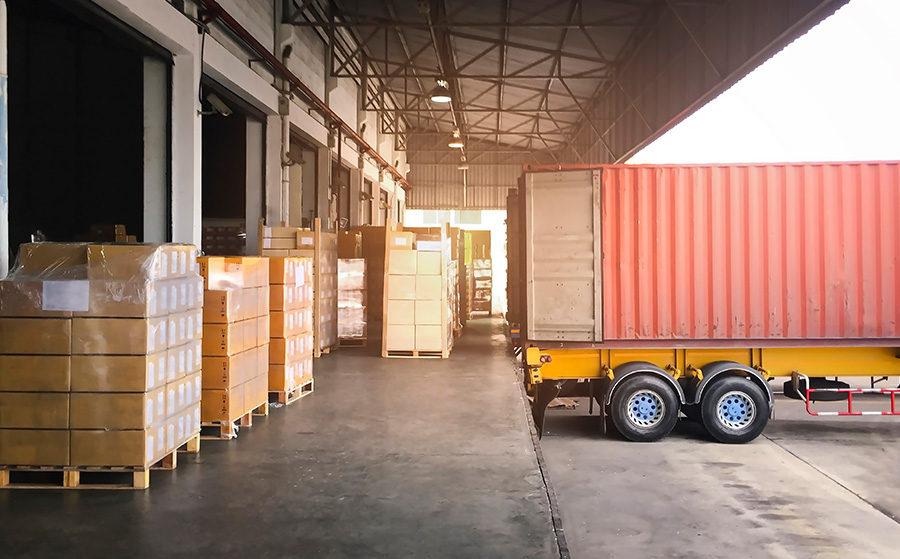The last-mile delivery from an overseas warehouse refers to the entire process of goods being picked from the overseas warehouse,
shipped out, and transported to the final destination. The end logistics delivery is the last-mile guarantee for products to reach customers.
To enhance the overall quality of last-mile delivery, it is necessary to coordinate and optimize each link, from order import, picking and
labeling to logistics delivery. Taking the one-piece-proxy shipment business as an example, how does the business warehouse complete
the relevant operations for last-mile delivery through the overseas warehouse and its system in daily business processing?
1. Order Creation
- Manually add individual orders or create orders in batches using templates.
- Directly import orders through the e-commerce platform integration system.
- Connect multiple e-commerce store accounts with the system via ERP.
- Import self-supplied shipping labels through the "offline label import" function, allowing batch import of shipping labels.

2. Order Synchronization
Orders are synchronized to the business warehouse management system, where the warehouse generates picking lists and
assigns them to staff.
3. Picking and Packing
The warehouse arranges personnel to pick goods based on the SKUs listed on the picking list. The picking route is optimized by the
system to improve picking efficiency. After the goods on the picking list are collected, they are sorted and packed according to the order.
4. Labeling and Shipping
The shipping labels for the orders are printed and affixed. The labeled packages are then sorted by logistics provider and placed in the
shipping area, awaiting pickup by the logistics company.
5. Pickup and Delivery
The logistics provider completes the pickup and delivers the packages. Customers can view the complete logistics tracking information
in the system.
6. Returns and Restocking
For products returned by logistics providers or buyers, conduct inspections and provide feedback. Finally, based on customer requirements,
restock, repackage, or dispose of the goods.
1. Truck Delivery
Local logistics companies with professional fleets and regular drivers are generally chosen for their inherent advantages in domestic delivery.
This is mainly used for replenishing inventory in the warehouses of platforms such as Amazon, Wayfair, Walmart, Overstock, and TikTok.
The business warehouse can also provide customers with truck reservation services.
2. Express Logistics Delivery
In collaboration with international courier companies such as UPS, FEDEX, and USPS, we offer delivery services. With a comprehensive logistics
system, we can provide efficient same-day or next-day delivery services, ensuring a high-quality shopping experience for customers. The business
warehouse has high-quality last-mile accounts, and shipping through these accounts can save a portion of logistics costs.

The Labeling System
In addition to the choice of courier service providers, the last-mile labeling system is also an essential part. The business warehouse has developed
its own labeling system, which, through system integration, supports one-click labeling for a variety of common courier companies, including
mainstream operators such as Fedex, UPS, and USPS.
1. Multiple Templates: Support for a variety of mainstream courier label templates allows users to choose the appropriate template according to
their actual needs, easily generate standard labels, and simplify the labeling process.
2. Batch Labeling: Support for batch labeling operations allows users to generate multiple labels at once, improving labeling efficiency. Compared
with traditional manual labeling methods, it can save up to 80% of order processing time.
3. Transparent Costs: More transparent shipping cost management allows users to clearly understand the details of each shipping charge, avoiding
any "fuzzy accounting" and helping users better control logistics costs.
4. System Integration: Efficient system integration automatically uploads the last-mile tracking numbers from the labeling system to the client system,
matching them with the corresponding orders. Users can independently query and track logistics information.
Timeliness, safety, and service are the three essential elements of last-mile delivery. Through a highly integrated last-mile labeling system, we can
provide more efficient, convenient, and secure service experiences for last-mile delivery, saving time and effort. In addition, this helps customers
obtain "value-for-money" last-mile services.**